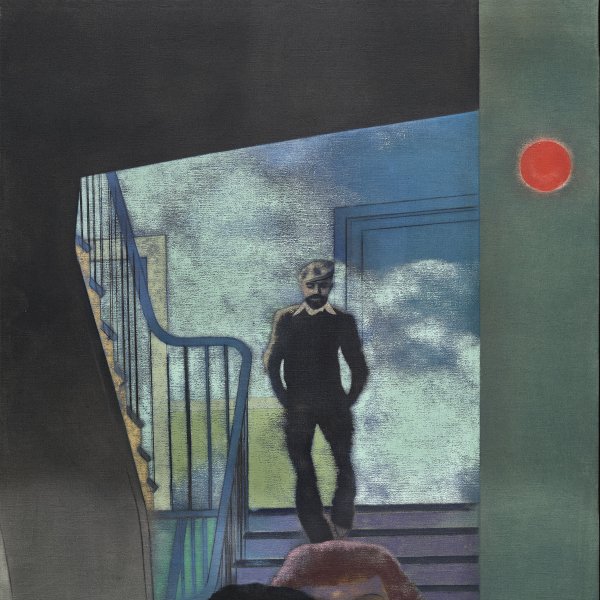Ronald B. Kitaj
Cleveland, 1932-Los Angeles, 2007
Ronald B. Kitaj took up drawing at a very early age and his first works were linked to the world of the sea. In 1950 he joined the crew of a Norwegian freighter and sailed to South America; and in 1951, after obtaining his seaman’s licence, he embarked on various petrol ships in which he travelled to Venezuela and the Caribbean.
While in Europe, in 1951 Kitaj visited Paris and Vienna, where he studied at the Austrian Akademie der Bildenden Künste and later at the Ruskin School of Drawing and Fine Arts in Oxford. In 1960 he enrolled at the London Royal College of Art and met David Hockney, the sculptor Eduardo Paolozzi and Chris Prater, with whom he produced numerous silkscreen prints. He gradually became a prominent figure on the London art scene. His relationship with Pop Art is reflected in his painting of the time, into which he introduced collages of images and texts. His first solo exhibition held at London’s Marlborough Gallery in 1963 brought him into contact with other figurative painters such as Francis Bacon, Lucian Freud, Michael Andrews and Frank Auerbach.
Kitaj held the post of guest lecturer at the University of California, Berkeley, in 1967. There he made friends with the painter Robert Creeley and the poet Robert Duncan. In 1969 he moved to the University of Los Angeles and painted the portraits of numerous film directors of Hollywood, where he lived until 1971, the year he returned to London. In 1976 the Hayward Gallery in the British capital staged the controversial exhibition on figurative art entitled The Human Clay, with which the artist aimed to criticise the dehumanization and sterility of art of the time. In 1994 the Tate Gallery in London held a major retrospective of his work, which was fiercely attacked by the critics. The painter blamed them for the early death of his wife, the painter Sandra Fisher, who died of a stroke around that time.
Kitaj’s painting remained within the orbit of figuration with literary references and he was always interested in the work of Degas, Cézanne and the Post-Impressionists. In his last years the influence of his American writer friends Philip Roth and Aaron Applefield spurred him to focus on Jewish themes.
While in Europe, in 1951 Kitaj visited Paris and Vienna, where he studied at the Austrian Akademie der Bildenden Künste and later at the Ruskin School of Drawing and Fine Arts in Oxford. In 1960 he enrolled at the London Royal College of Art and met David Hockney, the sculptor Eduardo Paolozzi and Chris Prater, with whom he produced numerous silkscreen prints. He gradually became a prominent figure on the London art scene. His relationship with Pop Art is reflected in his painting of the time, into which he introduced collages of images and texts. His first solo exhibition held at London’s Marlborough Gallery in 1963 brought him into contact with other figurative painters such as Francis Bacon, Lucian Freud, Michael Andrews and Frank Auerbach.
Kitaj held the post of guest lecturer at the University of California, Berkeley, in 1967. There he made friends with the painter Robert Creeley and the poet Robert Duncan. In 1969 he moved to the University of Los Angeles and painted the portraits of numerous film directors of Hollywood, where he lived until 1971, the year he returned to London. In 1976 the Hayward Gallery in the British capital staged the controversial exhibition on figurative art entitled The Human Clay, with which the artist aimed to criticise the dehumanization and sterility of art of the time. In 1994 the Tate Gallery in London held a major retrospective of his work, which was fiercely attacked by the critics. The painter blamed them for the early death of his wife, the painter Sandra Fisher, who died of a stroke around that time.
Kitaj’s painting remained within the orbit of figuration with literary references and he was always interested in the work of Degas, Cézanne and the Post-Impressionists. In his last years the influence of his American writer friends Philip Roth and Aaron Applefield spurred him to focus on Jewish themes.





